“Diversity is an intellect multiplier, especially when the diverse groups can collaborate well” – Mark Sareff
This year the International Women’s day was a different experience for me, no panels stating gender diversity facts most people are painfully aware of. Instead I had the proud privilege of being invited to do a fireside chat and explore new dimensions of diversity and its impact on innovation and business growth.
We are familiar with dimensions of diversity we are born with — gender, age, race etc. but less familiar with the dimensions we acquire in our lifetime — culture, life experiences, domains worked in, education background etc. These interesting dimensions set your thinking patterns, beliefs and problem-solving approaches.
Diversity is an intellect multiplier but, only when diverse groups can collaborate. We need a common language that helps diverse groups come together and collaborate. We need an inclusive environment that fosters diverse perspectives without judgment… here’s where design thinking comes in!
 Design thinking in its application celebrates diversity, when done well allows you to go broad try many, diverse approaches before narrowing down to one solution. It can also change how people work together for the better, introducing a deeper level of collaboration, appreciation of diversity and creativity.
Design thinking in its application celebrates diversity, when done well allows you to go broad try many, diverse approaches before narrowing down to one solution. It can also change how people work together for the better, introducing a deeper level of collaboration, appreciation of diversity and creativity.
Sharing a few key tools to help you create an inclusive environment that fosters diverse perspectives and hence innovative solutions:
1. Don’t brainstorm; think Independently, together While we are not against brainstorming, we believe brainstorming can lead to HiPPO decisions (Highest Paid Person’s Opinion) and can exclude out-of-the-box thinking because the facilitator or the group naturally judges all ideas being generated. Instead have everyone think independently and write down their ideas individually and review every single idea. Similar ideas get grouped together, no idea gets left behind or judged right away. Instead we build on existing ideas to make them more diverse and disruptive. It is a powerful process that celebrates diversity and creates an inclusive environment for disruptive ideas to form and persist.
2. Narrow ideas using clear criteria – The 2×2 tool is a narrowing tool, allows you to choose ideas that the team will filter down to. The team identifies 2 key criteria to narrow ideas (ideally, customer benefits) that would make massive impact on the business. Ideas are then plotted against those dimensions relative to the benefits it brings to the organization versus making Caesar-like decisions. Again allowing diverse teams and ideas to collaborate well hence leading to innovation and business growth.
3. Facilitating large group dialogues – The World Café is a structured tool intended to facilitate collaboration, initially in small groups and then linking ideas within a larger group to access the collaborative and collective wisdom in the group. Each person interprets the world differently, based on his/her perception. Sharing the viewpoints of others is essential for understanding alternatives and adapting strategies to deal with environments. Environments that recognize the contribution of all will foster a strong commitment to achieve common goals.
Diversity offers different experiences and novel perspectives, leading to better decision making and problem solving. It opens up new conversations pushing the boundaries on unrestrained thinking which enables breakthrough innovations.
At Pensaar, one of the things we celebrate is the differences we all bring to the table. Each of us comes with unique experiences having worked in varied industries and lived very different lives. It allows us to recognize each other’s strengths and learn from each other while also being sympathetic to each other’s weaknesses. Our different experiences and perspectives help us foster innovation to beat and not just meet the needs of our increasingly diverse customer base.
So much has already been written about this amazing topic, go here to read more:
· To Make Diversity Work You Need Design Thinking
· HBR’s How Diversity Can Drive Innovation
· 10 Companies Around the World That Are Embracing Diversity in a BIG Way


 Ever wondered if a Software could help business chart the next growth curve?.
Ever wondered if a Software could help business chart the next growth curve?.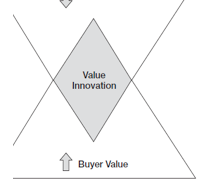 Low-end footholds exist; when an established or large organization focuses only on the prime customers or most profitable customers and overlook their needs and fail to fulfil the needs of the least profitable or low-end customers. New entrants seize the white space by servicing to these low-end segments with ‘good enough’ product. The performances of the new entrants are ever improving when compared to those established incumbents. However, the quality of their offerings increases over the period of time. New entrants create unprecedented value to the customers by adopting Value Innovation. Value Innovation is created in the region where a company’s actions favourably affect both its cost structure and its value proposition to buyers.
Low-end footholds exist; when an established or large organization focuses only on the prime customers or most profitable customers and overlook their needs and fail to fulfil the needs of the least profitable or low-end customers. New entrants seize the white space by servicing to these low-end segments with ‘good enough’ product. The performances of the new entrants are ever improving when compared to those established incumbents. However, the quality of their offerings increases over the period of time. New entrants create unprecedented value to the customers by adopting Value Innovation. Value Innovation is created in the region where a company’s actions favourably affect both its cost structure and its value proposition to buyers.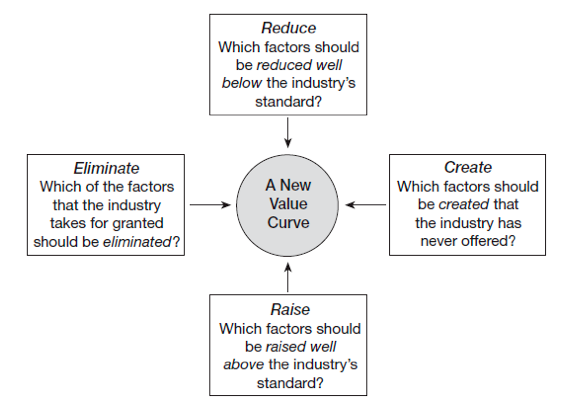
 Digital wallet and mobile commerce marketplace Paytm is creating huge market by enabling more than 80,000 merchants to do the transactions on its platform. Paytm is an Indian e-commerce shopping website launched in 2010, owned by One97 Communications which initially focused on Mobile and DTH Recharging. The company is headquartered in Noida, India. It gradually provided recharging and bill payment of various portals including electricity bills, gas bills, as well as telephone bills. Paytm entered India’s e-commerce market in 2014, providing facilities and products similar to businesses such as Flipkart, Amazon.com, Snapdeal. In 2015, it added booking bus travel. In July 2015, it included industrial supplies such as power tools, safety and security equipment, test & measurement apparatuses, machines, lab supplies, abrasives etc on its platform. Paytm states that the initiative will help SMEs get in touch with different suppliers for different needs. Currently, it claims to have crossed over 100 million users in the country in a very short span. It also declares that more than 75 million transactions are made through their platform. In 2014, the company launched Paytm Wallet, India’s largest mobile payment service platform with over 40 million wallets. The service became the preferred mode of payment across leading consumer internet companies such as Uber, BookMyShow, MakeMyTrip and many more.
Digital wallet and mobile commerce marketplace Paytm is creating huge market by enabling more than 80,000 merchants to do the transactions on its platform. Paytm is an Indian e-commerce shopping website launched in 2010, owned by One97 Communications which initially focused on Mobile and DTH Recharging. The company is headquartered in Noida, India. It gradually provided recharging and bill payment of various portals including electricity bills, gas bills, as well as telephone bills. Paytm entered India’s e-commerce market in 2014, providing facilities and products similar to businesses such as Flipkart, Amazon.com, Snapdeal. In 2015, it added booking bus travel. In July 2015, it included industrial supplies such as power tools, safety and security equipment, test & measurement apparatuses, machines, lab supplies, abrasives etc on its platform. Paytm states that the initiative will help SMEs get in touch with different suppliers for different needs. Currently, it claims to have crossed over 100 million users in the country in a very short span. It also declares that more than 75 million transactions are made through their platform. In 2014, the company launched Paytm Wallet, India’s largest mobile payment service platform with over 40 million wallets. The service became the preferred mode of payment across leading consumer internet companies such as Uber, BookMyShow, MakeMyTrip and many more.
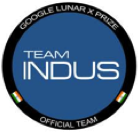

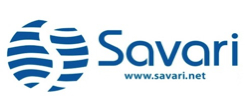



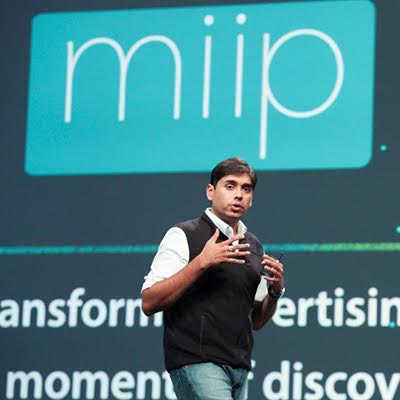 After all, what’s surprising? Indians including Ajay Banga (MasterCard), Victor Menezes (Citibank), Indra Nooyi (PepsiCo) and Anshu Jain (Deutsche Bank) have been CEOs of global corporations. And it’s now more than 20 years since Rajat Gupta became the CEO of the world’s bluest blue management consulting firm—McKinsey!
After all, what’s surprising? Indians including Ajay Banga (MasterCard), Victor Menezes (Citibank), Indra Nooyi (PepsiCo) and Anshu Jain (Deutsche Bank) have been CEOs of global corporations. And it’s now more than 20 years since Rajat Gupta became the CEO of the world’s bluest blue management consulting firm—McKinsey! The maker era, enabled by the Internet, DIY 3D printing, low cost chips/boards, open-source prototyping platforms like the Arduino, shifting business models and payment options have erased barriers to creation and expression and leveled the playing field. Today, if you want to express an idea, you can choose whether you want to employ sensors or film, an android app, performance or interactive sculpture. The Maker movement is sometimes perceived to be synonymous with geek culture, robotics and gadgets. And there is truth to this. Engineers, with their deep knowledge and a love of taking things apart are no doubt the movement’s most ardent mascots. However, making is more than just about the technology. It is about a cross pollination of ideas, the merging of the boundaries between disciplines and philosophies. At it’s core, the maker ideology is about moving from being a mere consumer to participating, influencing and changing the world you interact with- be it objects, people or experiences. It is also about pushing boundaries and experimenting for the sheer fun of it. And to achieve this, we need a variety of backgrounds and perspectives all playing with each other. Making/tinkering encompasses a dazzling variety of creations- including DIY quadcopters controlled by brainwaves, cloned fig trees, bamboo bicycles, environment-reactive clothing, 3D bio-printed organs. It touches every area of our lives and encompasses many different fields- arts and crafts, engineering, urban planning, architecture, theatre, film, storytelling, psychology, education, gastronomy, relationships, health & medicine.
The maker era, enabled by the Internet, DIY 3D printing, low cost chips/boards, open-source prototyping platforms like the Arduino, shifting business models and payment options have erased barriers to creation and expression and leveled the playing field. Today, if you want to express an idea, you can choose whether you want to employ sensors or film, an android app, performance or interactive sculpture. The Maker movement is sometimes perceived to be synonymous with geek culture, robotics and gadgets. And there is truth to this. Engineers, with their deep knowledge and a love of taking things apart are no doubt the movement’s most ardent mascots. However, making is more than just about the technology. It is about a cross pollination of ideas, the merging of the boundaries between disciplines and philosophies. At it’s core, the maker ideology is about moving from being a mere consumer to participating, influencing and changing the world you interact with- be it objects, people or experiences. It is also about pushing boundaries and experimenting for the sheer fun of it. And to achieve this, we need a variety of backgrounds and perspectives all playing with each other. Making/tinkering encompasses a dazzling variety of creations- including DIY quadcopters controlled by brainwaves, cloned fig trees, bamboo bicycles, environment-reactive clothing, 3D bio-printed organs. It touches every area of our lives and encompasses many different fields- arts and crafts, engineering, urban planning, architecture, theatre, film, storytelling, psychology, education, gastronomy, relationships, health & medicine. This is where makerspaces and Maker Faire comes in. Around the world, maker culture has emerged, founded on the ideas of collaboration and learning to learn. Innovation is a happy byproduct of this culture. From the Bay Area to Bogota, Istanbul to Nairobi, maker cultures are blossoming, driven by a spirit of collaboration and learning to learn. In India, Bangalore, Mumbai, Delhi, Ahmedabad and Kolkata have their own makerspaces, driven by a global sensibility, but also grounded in locally relevant approaches. One of these spaces, Bangalore’s
This is where makerspaces and Maker Faire comes in. Around the world, maker culture has emerged, founded on the ideas of collaboration and learning to learn. Innovation is a happy byproduct of this culture. From the Bay Area to Bogota, Istanbul to Nairobi, maker cultures are blossoming, driven by a spirit of collaboration and learning to learn. In India, Bangalore, Mumbai, Delhi, Ahmedabad and Kolkata have their own makerspaces, driven by a global sensibility, but also grounded in locally relevant approaches. One of these spaces, Bangalore’s  If previous industrial movements were about creating silos and competition, the maker movement emphasizes and engenders collaboration. A fashion designer collaborates with an engineer to create a responsive dress, a homemaker and a 12 year old biology enthusiast work on bio-fabrication projects, the local police team up with security specialists, designers and android developers to create apps and devices for a safer city. The possibilities are endless.
If previous industrial movements were about creating silos and competition, the maker movement emphasizes and engenders collaboration. A fashion designer collaborates with an engineer to create a responsive dress, a homemaker and a 12 year old biology enthusiast work on bio-fabrication projects, the local police team up with security specialists, designers and android developers to create apps and devices for a safer city. The possibilities are endless.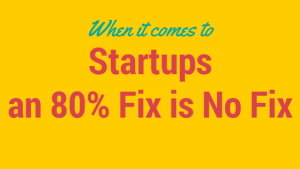 In this polytheistic world of entrepreneurs, who is the Startup Initiative for? If it’s for all the various types of entrepreneurs, then it will quickly succumb to the 80% syndrome. Policy-makers will address things that are the common denominator for all types of entrepreneurs. While this is necessary , it’s not sufficient. As any product manager in the technology industry will tell you, this 80% fix is a recipe for failure.
In this polytheistic world of entrepreneurs, who is the Startup Initiative for? If it’s for all the various types of entrepreneurs, then it will quickly succumb to the 80% syndrome. Policy-makers will address things that are the common denominator for all types of entrepreneurs. While this is necessary , it’s not sufficient. As any product manager in the technology industry will tell you, this 80% fix is a recipe for failure. Each of these types of entrepreneurs is in pain today . Last year 54% of the funded technology startups redomiciled themselves outside India. This year, iSPIRT estimates, the exodus has accelerated and the number of companies redomiciling out of India will be
Each of these types of entrepreneurs is in pain today . Last year 54% of the funded technology startups redomiciled themselves outside India. This year, iSPIRT estimates, the exodus has accelerated and the number of companies redomiciling out of India will be  The first was to revel in stories, as these are the best ways to share the hope and meaning of human progress. I couldn’t agree more. This is why, inspired by the Heath brothers Chip and Dan, Vinay Dabholkar and I centred our book 8 Steps to Innovation: Going from Jugaad to Excellence (HarperCollins, 2013) around stories. Stories, and even myths at times, play a crucial role in overcoming the fear of failure, one of the biggest obstacles to innovation. One of the world’s most innovative companies, 3M, does this wonderfully well when it encourages storytelling about the hundreds of inventors within the company who went on to succeed at last in spite of failing many times on the way.
The first was to revel in stories, as these are the best ways to share the hope and meaning of human progress. I couldn’t agree more. This is why, inspired by the Heath brothers Chip and Dan, Vinay Dabholkar and I centred our book 8 Steps to Innovation: Going from Jugaad to Excellence (HarperCollins, 2013) around stories. Stories, and even myths at times, play a crucial role in overcoming the fear of failure, one of the biggest obstacles to innovation. One of the world’s most innovative companies, 3M, does this wonderfully well when it encourages storytelling about the hundreds of inventors within the company who went on to succeed at last in spite of failing many times on the way. Like many people, I dislike long flights, particularly since my body does not deal well with jet lag. I therefore try to avoid visiting the United States more than once a year. But every time I visit that country, I remind myself how important it is to keep in touch with what is still the powerhouse of the global economy, for that enables a better understanding of India’s challenges in the years ahead.
Like many people, I dislike long flights, particularly since my body does not deal well with jet lag. I therefore try to avoid visiting the United States more than once a year. But every time I visit that country, I remind myself how important it is to keep in touch with what is still the powerhouse of the global economy, for that enables a better understanding of India’s challenges in the years ahead.